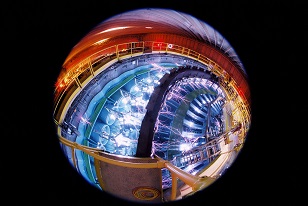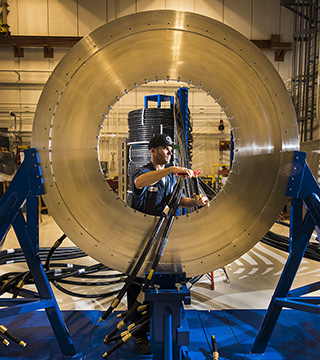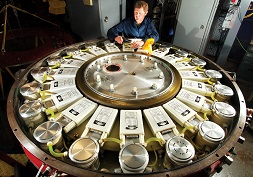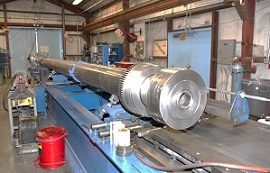Advanced Pulsed Power Concepts
Sandia’s Pulsed Power Research Programs

Sandia has become the undisputed leader in fast pulsed power science and technology. Beginning in the 1960s, our pulsed power devices have helped assure the performance of every nuclear system in the stockpile.
In July 2014’s issue of Sandia Research, learn more about the amazing capabilities of the Z Machine and our Pulsed Power technologies and the critical work we perform here at the laboratories.
Next Generation Pulsed Power Accelerator
We have developed the design of Thor: a pulsed power accelerator that delivers a precisely shaped current pulse with a peak value as high as 7 MA to a strip-load. Thor is powered by as many as 288 decoupled and transit-tiime isolated bricks. Read more about this pulsed power concept in this article, Pulsed Power Accelerator for Material Physics Experiments by DB Reisman, et al.

Linear Transformer Driver Technology

Sandia National Laboratories, in collaboration with a number of other institutions, is developing a new paradigm in pulsed power technology: the linear transformer driver (LTD) technology. This technological approach can provide very compact devices that can deliver very fast high-current and high-voltage pulses. Learn more about this cutting edge technology.
Dynamic Materials Properties Drivers
Sandia performs cutting edge experimental measurements of dynamic material properties at high pressures. These experiments utilize a variety of drivers, from high velocity gas guns to the most powerful pulsed-power facility in the world, the 26 million ampere Z facility. We focus on material’s equations of state, phase boundaries, and constitutive properties using both high-pressure shock waves and shockless compression on both the Dynamic Integrated

Compression Experimental (DICE) and Shock Thermodynamic Applied Research (STAR) gun facilities. A particularly exciting area of emerging interest is the study of material properties in regions of phase space that are both off-Hugoniot and off the principal isentrope.